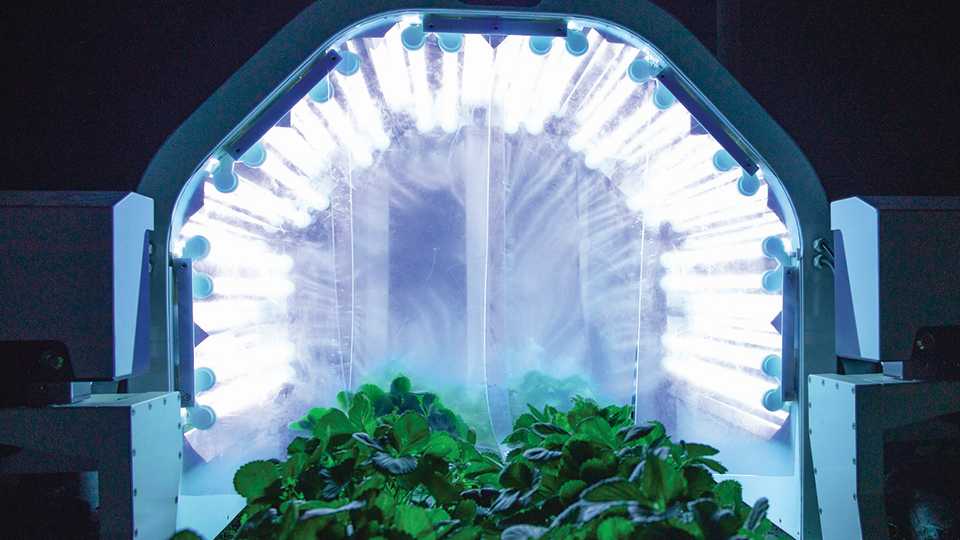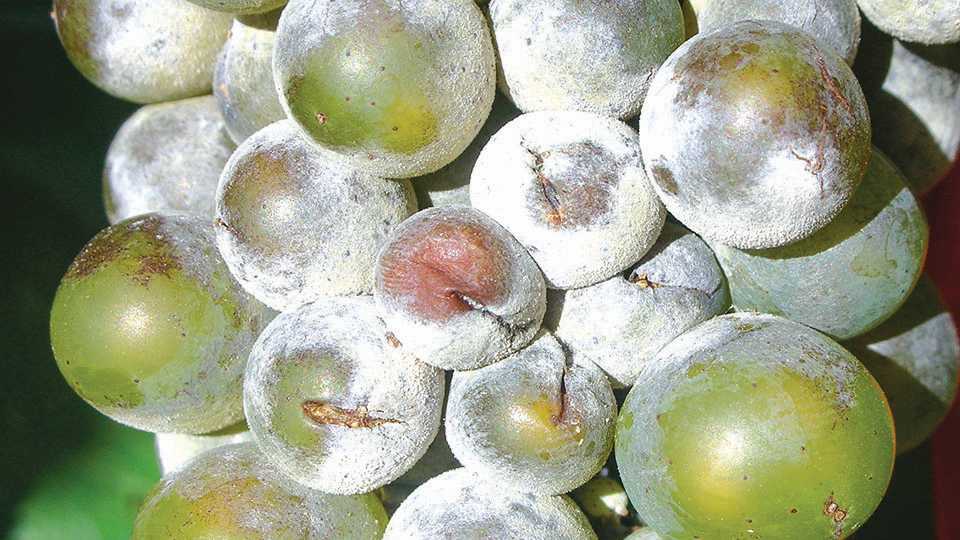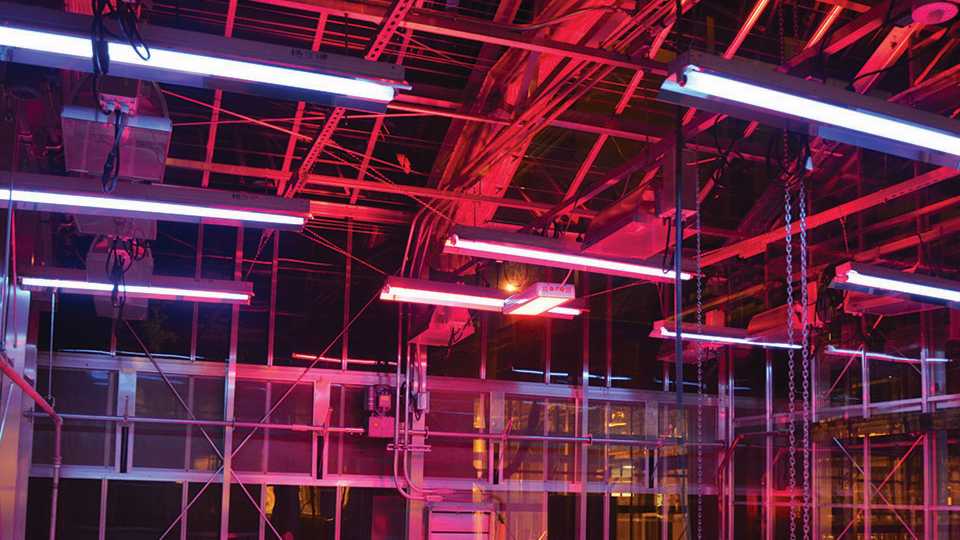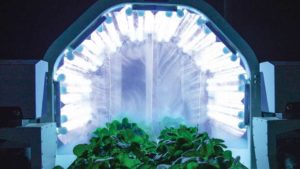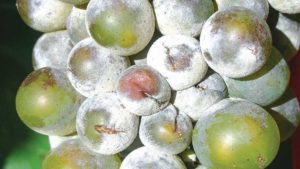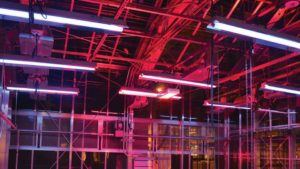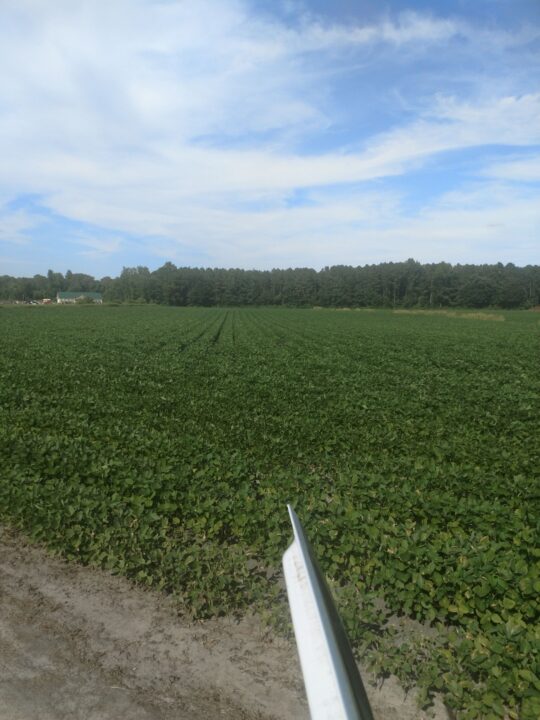Ways UV Light is Exposing Fruit Pests and Pathogens
David M. Gadoury has worked as a Plant Pathologist at Cornell University since 1985. In 1990, something interesting happened that would spark the research he and his team still continue today across disciplines and oceans.
One day, a retired engineer who had bought a vineyard stopped by his office. The man had worked in industrial photocopy processing and wondered if germicidal ultraviolet (UV) lamps could help suppress grape pathogens.
“I came into this line of work with an interest in how plant pathogens interact with light,” Gadoury, a Senior Research Associate in Cornell’s plant pathology and plant-microbe biology section at Cornell AgriTech, says. “They all use light in various ways, so when we were approached by the engineer I thought it would be a good fit for the kind of work we do on the biological effects of light.”
The team set out to work experimenting on how UV light affects a common grape pathogen powdery mildew (Erysiphe necator). While treatments were effective at combating the pathogen, they also damaged the grapes, making them look like tiny russet potatoes.
Their research went on hiatus for the next two decades until Aruppillai Suthparan, a Ph.D. student in Norway, chose to revisit the topic. He discovered that applying ultraviolet light at night required much lower doses to suppress the pathogen without damaging the plant.
“That was really the breakthrough we needed,” Gadoury said. “Using the lower dose at night to avoid damage while heightening the effects on the pathogen was key to success.”
Just like that, the research team was back at it.
PATHOGENS INTERPRET LIGHT
Microbial pathogens have been after plants for millennia. The research team looked to take advantage of the way pathogens interpret light through repeated cycles of day and night to direct their development.
“Powdery mildews have an evolutionary biology shaped by the rising and setting of the sun, not by electric lighting with temporal and spectral distribution that is totally unfamiliar,” Gadoury said. “Exposure to germicidal UV causes thymine molecule DNA to bind together, changing the genetic code to gobbledygook, affecting their ability to reproduce.”
During the daytime, damage to DNA from natural sources of UV is repaired immediately by a natural biochemical system in the pathogen. This system is recharged by the blue light component of natural sunlight. That means the UV repair mechanism does not operate at night, which is why UV treatments are optimal during those dark hours.
Though there are various types of UV lights, Gadoury and his team have found that low-pressure discharge lamps with shorter wavelengths of light provide the best balance between power and cost.
“These aren’t your everyday UV lights,” he said. “These are specific germicidal (UVC) lamps that also have applications in food safety, water purification systems, or human medicine, as in hospital settings.”
STARTING ON STRAWBERRIES
After successful field tests on greenhouse crops like strawberries, basil, rosemary, cucumbers, and tomatoes, the research team was ready to move to field studies. However, rather than moving straight to grapes, the team thought strawberries were a safer starting bet.
“Strawberries are a great crop to work with,” Gadoury says. “They’re high value and have a terrible problem with powdery mildew that can’t be easily controlled by fungicides, so it gives you a very motivated clientele. Strawberries also are highly tolerant of UV. Grapes’ UV sensitivity is somewhere in between strawberries and tomatoes. It’s possible to come to the right UV dose for most any with experimentation, but initial tests are trial and error.”
Part of the challenge of field testing was figuring out an application method. While light could easily be suspended over plants in a greenhouse, field use requires a uniform application of light over a geometrically complex target such as a strawberry plant or grapevine. Also, while mobile lights in the greenhouses move about 20 inches per minute, a field solution has to be powerful enough to move much faster, as much as two miles per hour, a common speed for tractors.
The team came up with an arch-shaped array with a series of lights and recurved reflectors to provide uniform irradiance around the entire unit. The array can be pulled by farm equipment.
“The light within is like a billiard table in which the balls never stop bouncing,” Gadoury said. “The amount of reflectance provides access to the interior canopy as well as the upper and lower leaf surfaces, which allows us to use the lowest dose possible.”
However, time also is a concern because UV applications must be completed no later than four hours before sunrise for the light to be lethal to pathogens. At temperate latitudes, the duration of the night near the summer solstice can be less than eight hours, leaving only four to apply UV treatments with optimal effect. In these cases, robots could be a better solution.
“Robots offer many advantages,” Gadoury said. “They don’t mind working all night long, seven nights a week. They’re also very precise and battery operated so there aren’t any fuel costs. Robots can also include sensors to monitor water intake, crop health, and growth all on the fly.”
The array produced positive results on the strawberries over several seasons of trials. The team was ready to come full circle and resume UV tests on grapes.
BACK TO VITIS VINIFERA
Excited by the results of the strawberry tests, the team launched collaborative demonstration trials at a commercial vineyard in New York, Washington State University, and the USDA-ARS Center in Corvallis, OR. The teams used tractor-drawn UV arrays to apply weekly treatments to ‘Chardonnay’ grapes.
“’Chardonnay’ is a great place to start because everyone grows it,” Gadoury says. “It’s one of the most widely used cultivars in the world. A white grape also lets us easily see phototoxicity effects or discoloration. If we can control powdery mildew on ‘Chardonnay,’ we’re fairly confident we can control it on any grape variety.”
Powdery mildew was moderately severe in 2019 and downy mildew had one of the worst years in recent memory. Still, the preliminary trials showed effective suppression of powdery and downy mildew, as well as mites. Gadoury says that though mites are multicellular, mobile, and generally more resistant to UV, the UV lamps reduced adult mites’ reproductive capacity and completely killed eggs. He also was happy to confirm the UV treatments didn’t reduce plant size or harvest.
“These are high-value crops, and you can’t harm the fruit,” he says. “There is very little tolerance for disease and even less for anything that affects wine quality.”
Gadoury and his team think UV technology could provide growers with an effective alternative for some fungicide applications by slowing the development of resistance, increasing the efficacy of remaining applications, and providing additional suppression of downy mildew and certain arthropod pests. Also, UV lights could be a great option for organic growers.
However, Gadoury advises growers to proceed with caution. While growers have fabricated various carriages for the arrays, the UV array is not a do-it-yourself project. In addition, he said no person should ever have an unshielded view of germicidal UV lamps, and training on how to work safely with UV is as important as it is for safe use of pesticides.
“These are not lamps you find in a tanning bed or house,” he said. “They are not the type of lamp you can work with unless you have the technical expertise to do so.”
LOOKING FORWARD
The research team plans to continue the grape trials, some incorporating UV autonomous robots in the 2020 growing season. They’ll also continue to work out dosing and application frequency.
“Doses seem to differ from pathogen to pathogen and crop to crop,” Gadoury says. “You can’t take the dose for greenhouse basil and apply it to grapes in the field. If this becomes a standard practice in agriculture, we’ll have to recreate the support system we have for fungicides and fertilizers. One hundred years ago, that’s where we were with fungicides and now we just take it for granted that we can find advice from many available sources.”
Gadoury says it made sense to start with powdery mildew because it attacks a variety of crops around the world, but he’s looking forward to continuing to analyze the effects of UV lamps on other pathogens and pests.
“It’s going to be a fun project to continue because at first we first thought UV was going to work on powdery mildew and not much else,” he says. “While I don’t think it’s a magic bullet for everything, the more we test, the broader the applicability seems.”





